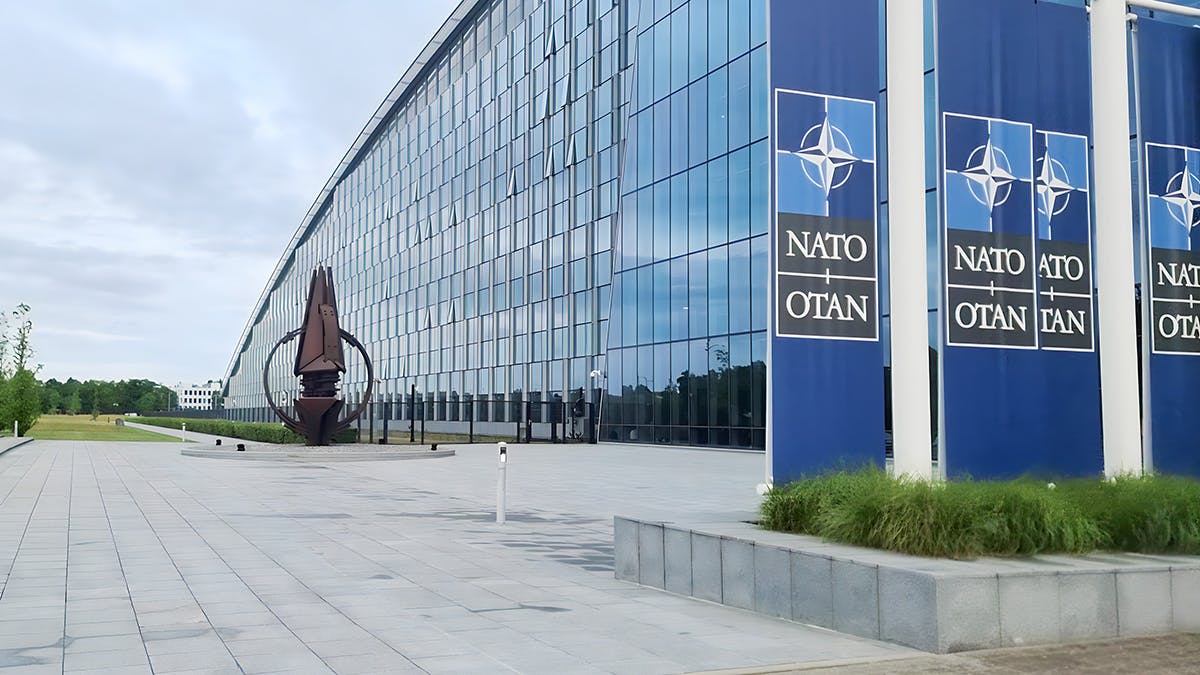At the fringes of the NATO Defence Ministerial in Brussels, Alliance officials confirmed that the NATO Security Assistance and Training for Ukraine (NSATU) command has become the central structure for coordinating military aid and training efforts, with over 60% of last year’s €50 billion in assistance now provided by European Allies and Canada.
In a background briefing attended by the UK Defence Journal, a senior NATO official said NSATU is already coordinating support for 25,000 Ukrainian troops, as well as the movement of over 6,700 tonnes of military equipment per month through hubs in Poland and elsewhere.
“Ukraine has now come to see NSATU as the mechanism for coordinating international support,” said the senior NATO official. Ukrainian officers are fully embedded within NSATU’s Wiesbaden headquarters and at logistics and training nodes across Eastern Europe.
NSATU, which became operational in late 2023, is a central component of NATO’s growing role in long-term support for Ukraine. While the command does not send equipment into Ukraine itself, it oversees donations, coordinates training, and manages battlefield equipment repair for Ukrainian forces.
Asked directly about the newly established NSATU trust fund — set up in April and administered by the UK Ministry of Defence — the senior NATO official said the fund is intended to address short-term gaps in support that donations alone cannot meet.
“Ukraine, along with NSATU, define the needs. These are often short-term requirements — medical supplies, uniforms, spare parts — that haven’t been met through other means,” the official said.
The trust fund is modelled on the International Fund for Ukraine, also managed by the UK, and forms part of a broader effort to better synchronise international assistance while addressing urgent operational needs.
A senior NATO military official provided further detail on NSATU’s progress since its inception.
“Since assuming responsibility in December 2024, NSATU has coordinated training for more than 25,000 Ukrainian personnel, facilitated over 6,700 tonnes of equipment per month through its Polish logistics hub, and managed over 1,500 equipment movements,” said the senior NATO military official.
“Ukrainians are not only receiving equipment—they are becoming very adept at sustaining it themselves. In many cases, they challenge us to find creative repair solutions we hadn’t previously encountered.”
Asked whether NATO personnel or contractors are entering Ukraine to assist, a senior NATO official was clear.
“NSATU does not conduct training directly—that is done by individual countries or the EU—nor does it deliver equipment into Ukraine. It facilitates delivery to hubs, for example in Poland, and it is Ukraine’s responsibility to collect and transport it from there.”
Another senior NATO official added: “In nearly all cases, Ukraine repairs its own equipment. If not, the donor nation arranges its return. NSATU helps coordinate those logistics.”
Officials underscored that NSATU operates entirely from Allied territory and that no NATO personnel are deployed into Ukraine under this structure.
Alongside NSATU’s growing institutional role, NATO officials highlighted several major new bilateral contributions:
€5 billion in new German military aid for 2024£1.6 billion pledged by the UK, with a focus on air defence€4.3 billion from the Netherlands, including €700 million for drones€1 billion committed by Belgium€7 billion from Norway, which is leading a new Nordic support brigade
Officials also pointed to the launch of the NSATU-linked drone coalition, co-led by the UK and Latvia, which has secured €2 billion in funding so far.
With NATO’s summit in The Hague approaching, both the structure and the trust fund are expected to grow. According to a senior NATO military official, NSATU is now coordinating more than 1,500 equipment movements and is expanding staff as more Allies join the mission.
